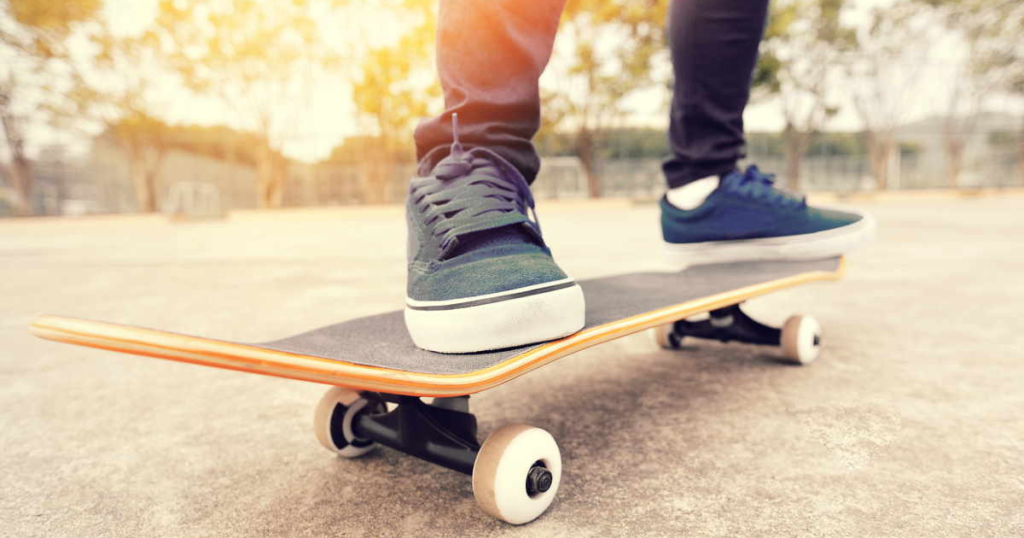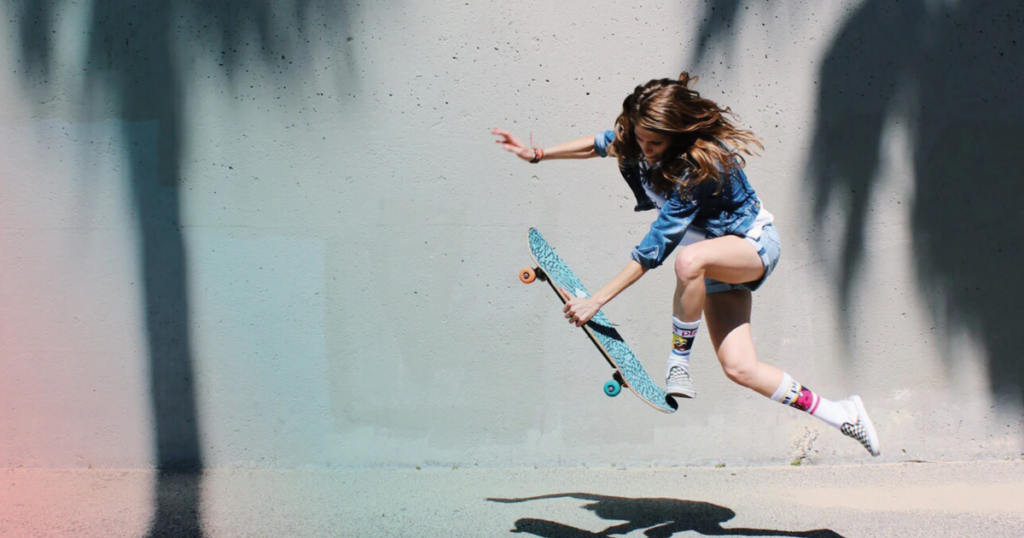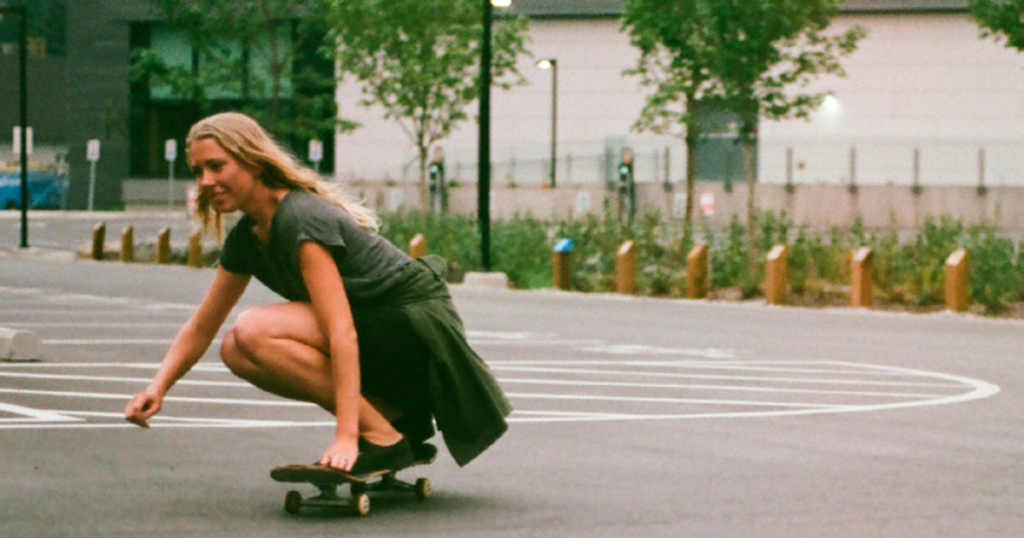Learning to skateboard as an adult can be an exciting and fulfilling journey. However, starting a new sport later in life may feel intimidating.
Skateboarding offers numerous benefits, including physical fitness, personal growth, and a sense of achievement. You can bring a unique perspective and life experiences to your skateboarding practice as an adult.
To help you start your skateboarding journey, I will provide some expert tips tailored specifically for adults who want to learn to skateboard.
Is Skateboarding Hard to Learn as an Adult?

Not at all! Skateboarding is easy to learn at any age, and adults can pick up the sport and become proficient.
While it may be easier for children to learn skateboarding due to their natural flexibility and fearlessness, adults can compensate with patience, determination, and a systematic approach.
Here are a few factors to consider when learning skateboarding as an adult:
Physical Fitness:
Skateboarding requires balance, coordination, and agility. Engaging in exercises and activities that enhance your core strength, flexibility, and overall fitness can help you progress faster.
Protective Gear:
Wearing appropriate protective gear, such as a helmet and knee and elbow pads, can help reduce the risk of injury and boost your confidence as you learn new tricks.
Also Read: 8 Most Worst Skateboard Brands Of 2024
How Long Does It Take the Average Person to Learn to Skateboard?

It takes around two weeks. The time it takes for the average person to learn skateboarding can vary greatly depending on several factors, including the individual’s natural abilities, dedication to practice, previous experience with similar activities, physical fitness, and learning style.
However, it’s essential to understand that skateboarding is a skill that requires consistent practice and patience. Some people may quickly pick up the basics, while others may take longer to feel comfortable on the board.
Should I Learn to Skateboard as an Adult?
Yes, you should learn skateboarding as an adult. Learning to skateboard as an adult can be a rewarding and enjoyable experience. While skateboarding is often associated with younger individuals, there is no age limit for picking up this activity.
Here are some factors to consider when deciding whether to learn to skateboard as an adult:
Motivation and Interest:
Do you have a genuine interest in skateboarding? Learning any new skill requires dedication and practice, so it’s essential to have the motivation to stick with it. If skateboarding excites you and you’re eager to learn, it can be a great fit.
Learning Curve:
Skateboarding has a learning curve, and it may take time to become comfortable on the board.
As an adult, you may progress differently than younger individuals due to various factors, including fear of injury or prior experience with board sports.
Patience and persistence are vital to overcoming challenges and improving your skills.
Also Read: How To Push On A Skateboard Just Like A Pro
What Are the Prerequisites for Adult Skateboarding?

While there are no strict prerequisites for adult skateboarding, there are a few factors and considerations that can enhance your experience and ensure safety:
Confidence:
While having confidence is great, it’s essential to strike a balance. Being overconfident can lead to unnecessary risks and potentially increase the chances of injury.
Approach skateboarding with a learning mindset, be open to challenges and gradually build your skills and confidence.
Quality Skateboard:
Invest in a good-quality skateboard that suits your needs and skill level. Look for a skateboard with a sturdy deck, durable trucks, and reliable wheels.
Consult with experienced skateboarders or visit a reputable skate shop for guidance on selecting the right skateboard.
Safety Equipment:
Safety should be a top priority when skateboarding. Ensure you have the following safety equipment:
- Helmet:
A properly fitting skateboard helmet protects your head from potential injuries. Choose a helmet specifically designed for skateboarding to ensure it meets safety standards.
- Knee and Elbow Pads:
These protectors provide cushioning and protection for your joints in case of falls or impacts.
- Proper Attire:
Wear comfortable clothing that allows freedom of movement. Avoid loose clothing that may get caught in the skateboard or wheels. Opt for closed-toe shoes with good grip to ensure stability on the board.
Remember, skateboarding takes time and practice to master. Don’t get discouraged by initial challenges or falls. Stay persistent, be patient, and enjoy the learning process.
Also Read: Top Skateboard Setup In 2024 (Easy And Affordable)
What are the best places to learn to skateboard?

When it comes to learning to skateboard, here are some of the best places to consider:
Skate Parks:
Skate parks are purpose-built facilities designed for skateboarding. They offer a variety of ramps, bowls, rails, and other obstacles that cater to different skill levels.
Empty Parking Lots:
Empty or less busy parking lots provide ample space for beginners to practice the basics of skateboarding. The flat, smooth surface lets you focus on balance, pushing off and maneuvering without obstacles or distractions.
Basketball or Tennis Courts:
These courts often have a smooth surface, which is ideal for practicing skateboarding skills. Their size and open space allow you to practice cruising, turning, and basic tricks.
Learn Balancing The Skateboard
Start by placing your feet shoulder-width apart on the board to learn how to balance on a skateboard. Distribute your weight evenly and keep your knees slightly bent. Practice standing on the board and getting a feel for maintaining your balance.
Learn Pushing-Off The Skateboard
To push off on a skateboard, place your front foot on the board with your toes facing forward. Use your back foot to push against the ground, propelling yourself forward. Transfer your weight to your front foot and place your back foot on the board as you go.
Learn To Stop The Skateboard
There are a few methods for stopping a skateboard. The most common method for beginners is foot braking. To brake, take your back foot off the board and drag it on the ground to create friction and slow down.
Learn To Do Different Tricks
Learning different tricks on a skateboard takes time and practice. Start with basic tricks such as ollies, kickflips, or shuvits. Find tutorials or instructional videos online demonstrating each trick’s step-by-step process.
Break down the trick into smaller movements and practice them individually before attempting it. Focus on proper foot placement, timing, and body positioning to execute the trick successfully.
Also Read: What Is Wheel Bite On A Skateboard (5 Ways To Fix)
Things You Need To Avoid

Indeed, there are certain things to avoid when learning and practicing skateboarding. Here are some crucial points to keep in mind:
Pushing Mongo:
Pushing Mongo refers to making with your front foot while keeping your back on the board. It is generally considered a less efficient and less stable pushing technique. It can affect your balance and limit your ability to perform certain tricks.
Avoid Unnecessary Swaying:
When riding the skateboard, try to maintain a stable and balanced stance. Avoid swaying or rocking your board from side to side, as it can make it challenging to maintain control and stability.
Keep your weight centered over the board and maintain a smooth and steady ride.
Acceptance of Risk:
Skateboarding involves a certain level of risk, and it’s essential to be aware of and accept those risks. However, it’s crucial to take appropriate safety measures to minimize the chances of injury.
Wear protective gear, choose suitable practice locations, and progress at a pace that matches your skill level and comfort.
Avoid Excessive Leaning on the Nose or Tail:
Leaning too much on the skateboard’s nose (front) or tail (back) can disrupt your balance and stability. It can also make it difficult to control the board during maneuvers and tricks.
Maintain a centered stance and distribute your weight evenly over the board for better control and stability.
By avoiding these practices, you can improve your skateboarding technique, enhance your control and stability on the board, and reduce the risk of injury.
Wrapping Up
Learning to skateboard as an adult is entirely possible and can be a rewarding experience. Here are some expert tips: start with the right equipment, take it slow, focus on building balance and coordination, practice regularly, seek guidance if needed, and most importantly, have fun and be patient with yourself.
Frequently Asked Questions
Can I learn to skateboard at 30?
Yes, you can learn skateboarding at 30. It’s always possible to start. Practice regularly, take lessons if needed, and focus on building balance and coordination.
How do you start a skateboard in your 30s?
To start skateboarding in your 30s, get a suitable skateboard and protective gear and find a safe place to practice. Begin with basic techniques, gradually progressing as you gain confidence and skills.
How long should I skateboard a day?
Skateboarding time per day depends on your schedule and fitness level. Start with short sessions, around 15-30 minutes, and gradually increase as you improve. Listen to your body and take breaks when necessary to avoid injuries.



